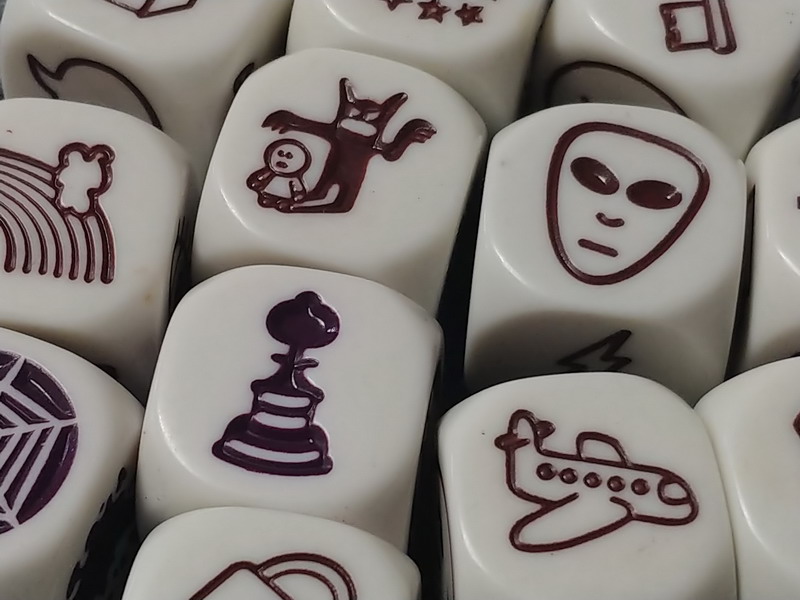Playfulness: In Teaching and Learning
An interview with Bryan Hale
Learning a second language is time-consuming hard work. We do not usually think of it as something enjoyable. But maybe that is where our thinking has gone wrong. Bryan Hale is an advocate for “playfulness” in EFL teaching and learning whom we were recently able to interview on the topic. Bryan teaches at Yeongam High School. He is presently the president of Korea TESOL and a past president of the Gwangju-Jeonnam KOTESOL Chapter. — Ed.
Interviewer: For some time now, you have been researching the topic of integrating playfulness into EFL pedagogy. When I think of “playfulness,” the first thought that comes to mind is just playing fun games in class. The second thing I think of is “edutainment,” specifically, video games that have an educational aspect to them. Is either of these in any way related to what “playfulness” in EFL refers to? Please describe “playfulness” for us.
Bryan: I think that is a great starting point because it is useful to distinguish between “just games” and “playfulness.” Of course, there is nothing wrong with “just” a game, but I think many classroom games and edutainment-type products are basically an un-playful task with a game attached. They can be really motivating and engaging, but what got me so interested in playfulness in language teaching was noticing how, when a task itself encouraged learners to be spontaneous and flexible, they often produced much more language and seemed to have a better time doing so. I could go on and on about the meaning of “playfulness,” but I think this is the most important meaning: a positive feeling that encourages spontaneity and flexibility [Bateson & Martin, 2013, pp. 12–13]. Playfulness and games obviously overlap, but gameplay can shade off into unplayful, competitive behavior. For me, a playful classroom task might be a game, but the key thing is that it encourages learners into a space of novelty and vivaciousness with language.
Interviewer: “Vivaciousness with a second language” – that is an interesting concept. How did you get so involved with the concept of playfulness in language teaching?
Bryan: Lots of EFL teachers have probably experienced the “It’s not a game, it’s an activity” syndrome, where students push and push for activities that are fun, but others (such as bosses or parents) want to be reassured that classroom time is being spent productively, so you end up trying to find activities that look capital-E Educational, but also kind of feel like games. As a hagwon teacher, I certainly dealt with these seemingly contradictory demands! It was sometimes frustrating and stressful, but I think it actually motivated me to find activities that learners felt good about (or at least complained about less) while also being clearly useful for language practice. And I found that those tended to be activities where there was some kind of playful ambiguity, where students eased themselves into language use that was ridiculous and wonderful and rich. And when I found those kinds of activities, I also valued them because I could see they were helping learners to overcome some ongoing classroom challenges. For example, discomfort about communicating with fluency or letting go of the crutch of accuracy. Or, generally, helping all learners to use English in meaningful and social ways, even if they had no “real” need to do so.
Am I being too abstract? Let me give a more specific example. Lots of language teachers have probably tried some version of “Alibi,” where there is a fictional crime and some “police” students investigate the others, who need to try to offer good excuses about where they were. As a hagwon teacher, I tried lots of different versions of this. When students had almost complete freedom about what to say, or alternatively, when I gave them too much support with what to say, everything was kind of robotic and dull, and the activity did not take off. But I found it was helpful if the suspects were stuck with a particular alibi, but had enough flexibility to squirm away from police questions. For example, if you give them an image to turn over, whatever it shows is their alibi. Say it is a picture of a PC bang [internet café]. Then the police can attack, ferociously, about how the suspect never goes to PC bangs because they are terrible at games! But then the suspect can counter that, actually, by saying that they are practicing League of Legends unranked, and soon they will be a good player. Suddenly there is this cat-and-mouse exchange going on, students’ eyes are sparkling, and the squirming and wiggling around the ambiguity of the picture is generating a lot of language. When activities worked like this, it made me stop and think, “I want to understand more about how this is encouraging so much language practice, compared to seemingly similar tasks that do not take off like this.”

Interviewer: Is playfulness a topic mainly associated with second language teaching and its accompanying language activities and games, or is it more generally related to education and has now come to also be related L2 pedagogy?
Bryan: Play is a vital topic in lots of different fields, and unfortunately the different fields have not always been good at talking to each other. I actually started out reading about playfulness in ethology, the study of animal behavior, before discovering the second language acquisition work on “language play,” which I think deserves a lot more attention. In between these there are so many different important ideas and theories, especially in developmental psychology and education, where there are multiple threads of scholarship.
Interviewer: Is playfulness best incorporated into young learner pedagogy, or can it also be used with older learners? I know that you teach high school students. Does playfulness work well with them also? Are the principles associated with playfulness the same for younger learners and older learners, or does it manifest itself quite differently?
Bryan: If you want to get really abstract, I think that play is an emergent phenomenon in many systems at the “edge of chaos” [Goodwin, 1994, p. 179; Larsen-Freeman & Cameron, 2008, p. 57; Wheatley, 2006, p. 75], where systems try to maximize the possibilities open to them. That is an extravagant way of saying that playfulness can be valuable with language learners of any age – and probably, alien language learners as well, if we ever meet any. I do not know enough about very young learners, and I think the type of playful teasing I was describing earlier might not work with them, but at a broader scope, across ages, and even in animals, I think what makes play so valuable is that it allows learners to prepare for unknown future situations. There is no way to prepare for every situation you might encounter – in fact, one of the paradoxes of language learning is that there really does not seem to be enough time to do it in a human lifetime. But playful practice can give learners experience with coordinating complex behaviors and do so without feeling cognitively or emotionally overwhelmed. I do not think play is a necessary part of language learning (though perhaps it is for very young learners), but for lots of learners, it is a great boost.

I have found that playfulness emerges out of particular situations, social relationships, and contexts. So, it might manifest differently depending not only on age groups but for any particular group. That is part of what makes play powerful, but also challenging to incorporate into education, especially if you want stringent predictability. With play, processes can be more important than exact content. So, with very young learners, that might mean encountering various stories and songs and playing with language form and sound, playing with characters and plot, and acting language out. With teens, I am fond of the kind of playful teasing I have described – so long as it is friendly – but teenagers can also experiment with language form and meaning. Adult learners can take really well to parlor game-type language play, but also to being playful in a really positive way with more traditional language classroom tasks! With any group, I think a key point is building flexibility into classroom activities so that learners can throw out a lot of gambits and see what takes off for them.
Interviewer: Could you give us some examples of how playfulness can be incorporated into the EFL classroom and curriculum? Could you also give us some examples of activities that especially demonstrate playfulness pedagogy for different learner age groups: young learners, teens, young adults, and adults?
Bryan: Here is an example of an activity I do with teenagers that I think demonstrates how playfulness can help to practice a particular language function without much of a game per se. It works well with a group that knows each other fairly well – I would never do it as part of a first lesson, but I like doing it with my high school first-graders about halfway through the first semester.
Have one student come sit in front of the screen or projector, so that they cannot see what is on it. Then, on the slide behind them, reveal five things that relate to a particular topic, including one or two silly examples. For example, if the topic is pets, you might show pictures of a dog, a cat, a mouse, a snake, and a skunk. Then, ask other students to recommend one of the choices to the student at the front without giving away the topic. They might say “I recommend number five because your hair is similar to this,” or “Number three suits you because you are very quiet.” Once recommendations are exhausted, have the student at the front choose one of the choices by naming its number. They can also try to guess the topic. Then have them look at the pictures, and get their feedback on how they feel about their choice and about the recommendations their classmates gave them in general.

There is no winning in this activity. There are no points. When I do this in class, I try to include as many students as possible, but I also just let the activity go until it runs out of steam. The point is just to find ways to make the pictures and the recommendations socially meaningful and fun, and to do a little bit of friendly teasing. By including several pictures for each slide, and slides covering various topics, the activity makes possible a lot of potential social meanings and novel connections – far beyond what you could specifically plan as a teacher.
Flexibility like this can allow learners to throw out various gambits until an activity blossoms. Maybe young learners are better at being playful right away, but with teens and adults, this kind of intentional ambiguity helps, and I think it can come into all kinds of topics and need not be limited to tasks that are obviously playful. In debate, for example, learners might feel more free and spontaneous if the topic is somewhat ambiguous, maybe even silly. When helping learners develop writing skills, it might be more productive to start with weird and wonderful creative writing prompts, so that learners can stretch their language muscles, before asking them to hone in on particularities around structure and cohesiveness.
Interviewer: Do play and playfulness pose any challenges to EFL as it is often practiced or institutionalized, in Korea and elsewhere?
Bryan: In play, processes can be more important than any particular content. The value of the practice can be in coordinating complex language behavior without feeling overwhelmed, but the specific language might not be essential or even something you can plan exactly. I have mentioned giving learners the flexibility to throw lots of different things at an activity and see what works. I think this can involve learners using language in ways that might make teachers feel a bit anxious. For example, in the version of “Alibi” I mentioned, I have found that students often end up doing a kind of shared storytelling in the simple present, rather than the “wh-” question-and-answer routine that a teacher might hope for. But this helped them to get out a lot more language and to find the activity socially meaningful. So, incorporating playfulness into EFL might mean being a bit less controlling about language at different levels such as grammar or patterns of interaction. This might be the biggest challenge, because teachers are so often expected to plan everything and determine exactly what goes on in classrooms, but playfulness is all about emergence and letting language blossom.
Interviewer: Thank you, Bryan. With your explanation of playfulness, I imagine your classes as being interesting, warm, non-threatening, and super-language-learning sessions!
Interviewed by David Shaffer, vice-president of Gwangju-Jeonnam KOTESOL and Gwangju News’ editor-in-chief.
References
Bateson, P., & Martin, P. (2013). Play, playfulness, creativity, and innovation. Cambridge University Press.
Goodwin, B. (1994). How the leopard changed its spots. Phoenix Books.
Larsen-Freeman, D., & Cameron, L. (2008). Complex systems and applied linguistics. Oxford University Press.
Wheatley, M. (2006). Leadership and the new science: Discovering order in a chaotic world (3rd ed.). Berrett-Koehler.




